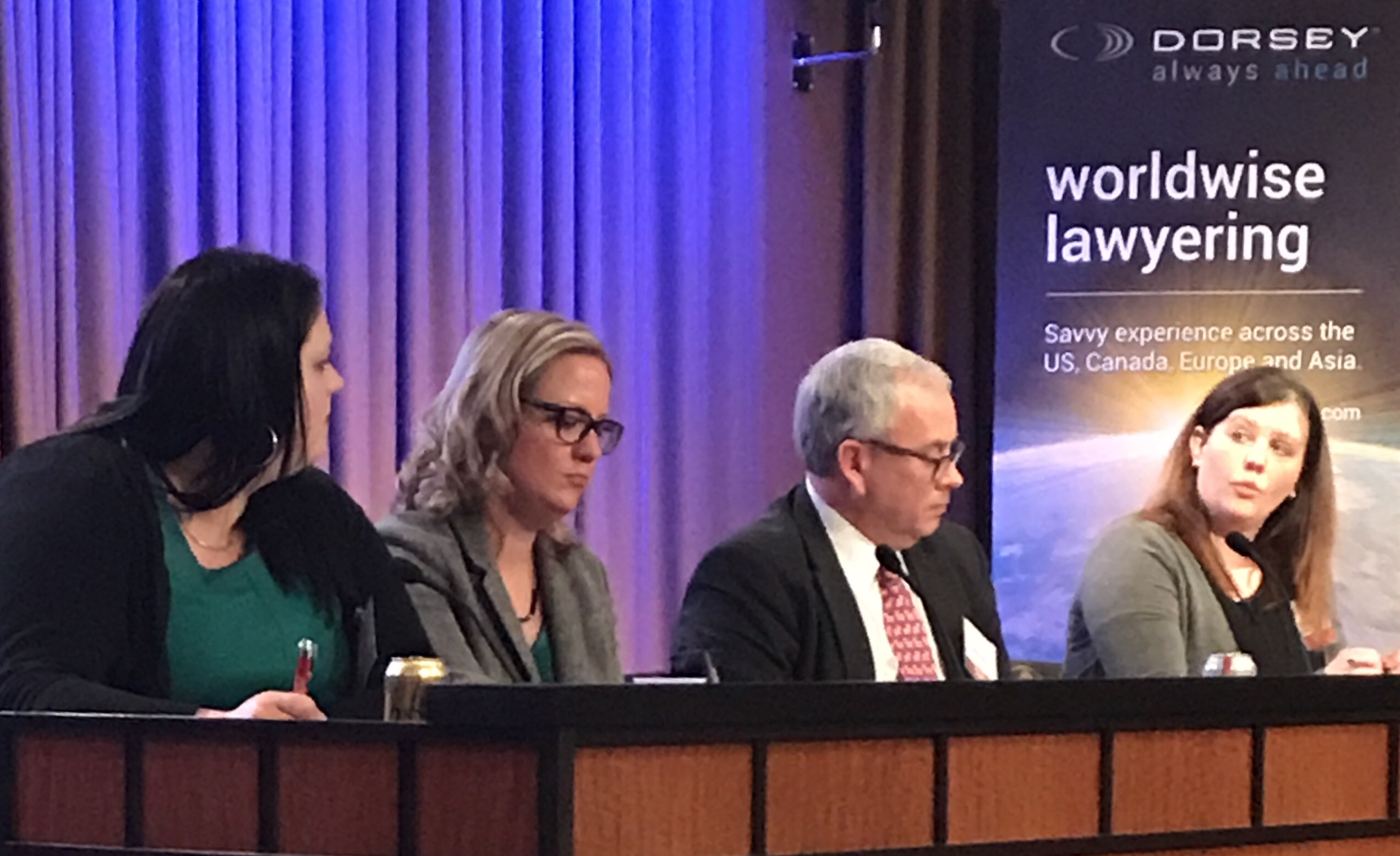As a researcher who studies the effectiveness of community supervision practices and policies on reducing reoffending, it can be easy at times to focus on the “what works” literature and simply compare to where the field aligns with this research. But often, in the research on risk, need, and responsivity (RNR),1 we do not spend much time talking about how the criminal justice system, and particularly the courts, may either help or create barriers in implementing RNR. It is not that the courts help or hinder RNR on purpose, but it is the nature of probation to be impacted by the goals of the judge, public defender, and prosecutor. These goals may or may not be the same as those a probation agency is charged with or defined in the same way. Probation department staff, judges, prosecutors, and public defenders all state that public safety is a main concern. But if you ask each one of them what that means, you would get some different answers, especially once you start asking about how they pursue public safety in their role. What is even more interesting, is that today a lot more people are talking not just about public safety, but about giving people a chance to rehabilitate and resources to change. Despite this, there are still different perspectives on how this can be accomplished across probation and the courts.
Probation department staff, judges, prosecutors, and public defenders all state that public safety is a main concern. But if you ask each one of them what that means, you would get some different answers, especially once you start asking about how they pursue public safety in their role.

On March 14, 2018, the Robina Institute and the Minnesota State Bar Association Criminal Law Section held a co-sponsored event to discuss probation revocations and brought together a range of perspectives from the courts and probation. I presented on the “what works” research for reducing recidivism among individuals on probation supervision, which is: focusing on those who are high risk to reoffend (risk), targeting needs related to reoffending (need), and how to target needs most effectively (responsivity).2 Afterward, Kelly Mitchell brought in the members of the panel (a prosecutor, public defender, and probation officer) to discuss their role in the revocation process. During the session, the members of the panel were in agreement that they all wanted to support the probationer so that they might complete their supervision successfully. However, as I listened to each of the panelists, I was struck by the different philosophical goals and roles of each person. These different perspectives reminded me that each decision-maker at the revocation stage approaches violations of probation differently. For example, public defenders are tasked with representing their clients and may argue for their client to remain on supervision after a violation because their client is requesting them to do so. However, a probation officer may have assessed their client as high risk to reoffend and are familiar with their pattern of noncompliance, where they might argue for a revocation or a period of incarceration as a response to the violation. The public defender must represent their client and argue for them to remain in the community, despite what the research might indicate is best for that probationer long-term. Conversely, a prosecutor may want to argue for someone on probation to have their supervision revoked for committing a violation they might consider serious enough to warrant a strong response. Yet, that probationer, despite having violated a condition of probation, could be assessed as low risk to reoffend on a risk assessment and would have a strong likelihood of doing well in the community still. In the end, RNR might allow probation officers to identify higher risk probationers and focus their supervision on them, just as they can identify low risk probationers they should not concentrate their supervision time and resources on. But, when the revocation hearing is held, each person involved in the decision at that stage can have goals that might conflict with what the research would guide an officer to do in response.
These different perspectives reminded me that each decision-maker at the revocation stage approaches violations of probation differently.
The March 14th event, “Probation Revocation From All Sides: Probation, Prosecution, and Defense Considerations,” was a great opportunity to bring all perspectives together on one issue. I wonder though, how can we do this more often? There is a lot of research on implementation challenges at the agency level for those supervision agencies implementing RNR. These articles focus on the barriers of implementing RNR within in agency according to the fidelity of the model,3 addressing organizational issues such as workload constraints and staff buy-in,4 and also research highlights the various methods in which we evaluate and refine the practice of RNR in different correctional settings.5 As researchers continue to evaluate RNR for probation supervision and pursue policies across the county that support RNR for community supervision, we also need to identify how the courts can support these principles but within the limits of their own roles and purpose. On the one hand, probation departments are tasked with rehabilitating offenders. However, many probation agencies are housed under the courts (such as an administrative office of the courts) and even for those probation agencies operating independently or under the department of corrections in the state, ultimately the court still makes decisions about revocations, grants early discharge from supervision, assigns conditions, and a whole host of other aspects of probation. Probation is often stuck in a balancing act, where even with the best intentions to apply RNR, they still have to answer to the various court decision-makers who may make judgments that do not align with RNR.
This is important because when we conduct RNR research, we have to remember that probation does not operate in a vacuum. So, what can other researchers who study corrections like me, do about this?
When we seek to evaluate or assist probation agencies in implementing evidence-based practices like RNR, we need to improve our efforts so that we acknowledge and understand the context that court systems and political systems play on probation agencies. Probation chiefs may answer directly to the courts or at a minimum, depend on a collaborative relationship with the courts to operate effectively. From my experience evaluating probation departments on their adherence to the application of RNR in supervision practices, I have found that many probation officers struggle to address treatment according to RNR because of some of the conflicts that can arise between RNR principles and court involvement. For example, a judge might order a probationer to an intensive residential substance abuse program even though the officer has assessment results that suggest the person complete a less intensive outpatient program. Or, a judge might want to order a probationer to report once a week, even though the individual was scored as low risk and should receive less intensive supervision. Regardless of how well a probation officer is trained and understands RNR, there are limitations to applying the research in practice. I think many of us doing research in this area know this, in theory, but it is not often articulated in the evaluations and the research we conduct on this topic. There is more we can do to include the system challenges that arise in implementation of EBP in community corrections.
This is important because when we conduct RNR research, we have to remember that probation does not operate in a vacuum. So, what can other researchers who study corrections like me, do about this?
This leads to the next important implication. What can researchers do to bridge this gap between the courts, especially attorneys, to educate them on RNR? And, what do researchers need to understand to design better studies and evaluations of probation supervision so that we acknowledge the real-world setting of the courts? As researchers, it is important to understand the limitations that exist with the court’s ability to support RNR. Scholars who study probation and corrections can offer trainings on the research or develop materials that translate their findings into more policy-friendly documents. There are a lot of scholars and organizations that do this very thing (including the Robina Institute). However, there is room to improve on how well we not only share, but exchange information. We can continue to conduct trainings, deliver presentations, and develop reports on the research, but I would like to hear from judges, prosecutors, defense attorneys, and other court decision-makers on:
- What has the research on RNR and probation ignored to date?
- What can we do to address some of the challenges the system presents in applying RNR in the real-world setting?
These are just a few questions I have, but I am sure practitioners and attorneys in the field have many more.
Continuing to consider a range of perspectives on probation revocation can only help us improve processes and outcomes. Let’s bring together all of these perspectives again sometime, shall we?
- 1Andrews, D. A., Bonta, J. and Hoge, R. D. (1990). Classification for effective rehabilitation: Rediscovering psychology. Criminal Justice and Behavior, 17, 19-52.
- 2Andrews, et al. 1990
- 3Andrews, D. A. (2006). Enhancing adherence to risk-need-responsivity: Making quality a matter of policy. Criminology & Public Policy, 5, 595-602.
- 4Ferguson, J. L. (2002). Putting the “what works’ research into practice: An organizational perspective. Criminal Justice and Behavior, 29, 474-492.
- 5Taxman FS, Marlowe D. (2006). Risk, needs, responsivity: In action or inaction? Crime & Delinquency, 52, 3–6.

